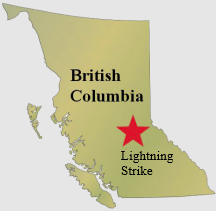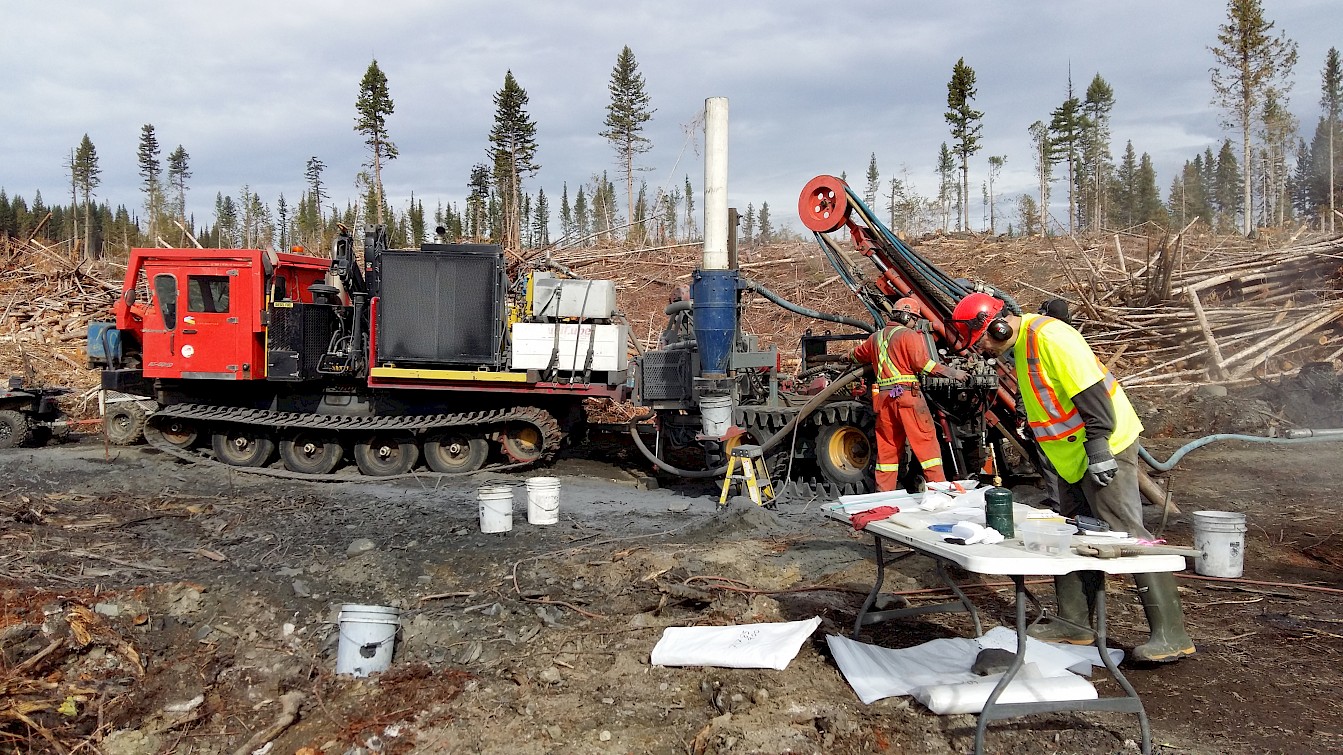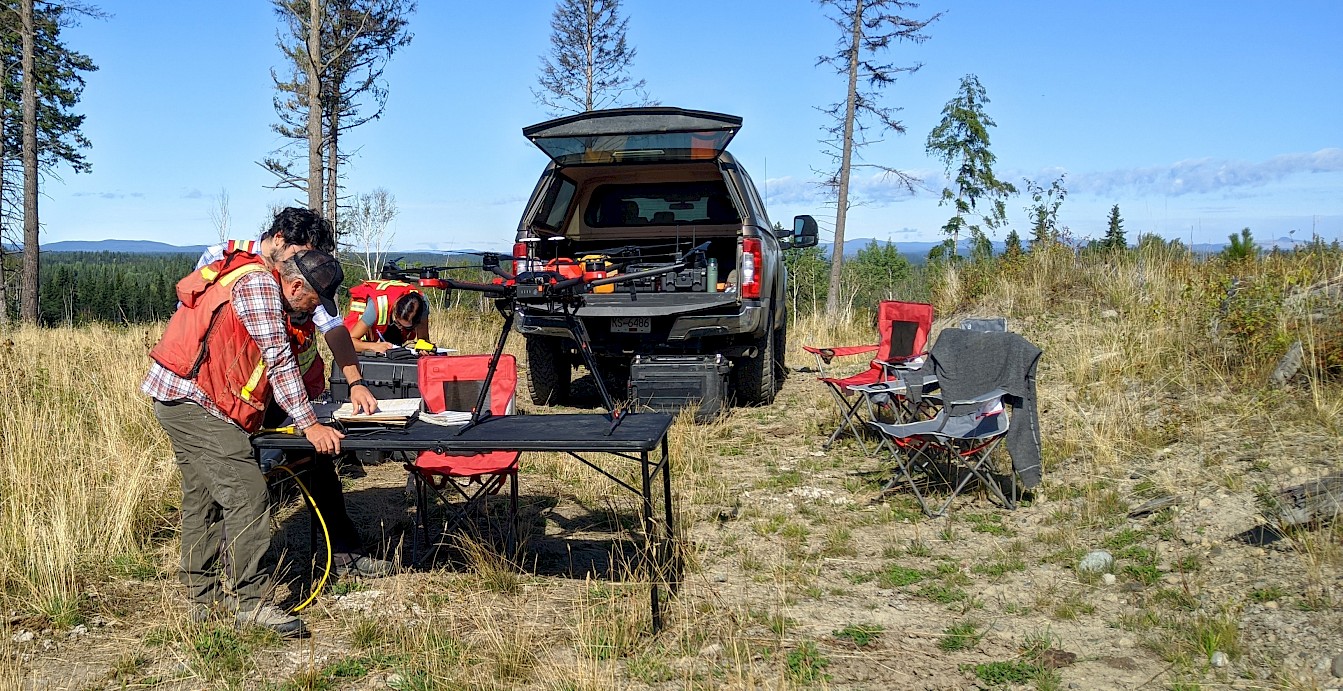
Gold mineralization in the area of staking was first reported by Homestake Development Corporation in 1984 with the discovery of a significant soil gold anomaly underlain by Triassic aged shale and siltstone from which quartz carbonate boulders grading up to 25.10 g/t gold and 216.8 g/t silver were sampled.
In 2006 Skygold Ventures Ltd. (later Spanish Mountain Gold Corp.) staked this area and completed mechanical trenching and drilling in 2008 and 2010. Seven drill holes completed in this period are located on the Lightning Strike claims staked by Cariboo Rose. Significant intercepts include 4.54 g/t gold over 3.8 meters, 1.03 g/t gold over 26.0 meters, and 19.30 g/t gold over 1.5 meters. In 2019 and 2020 Cariboo Rose extended soil geochemical grids to the south and east of the historic drilling with approximately 2000 samples collected which have confirmed the anomalous gold feature extending 1,500 meters to the south and 1,250 to the east of the previous target area and a larger soil silver anomaly coincident with the gold anomaly excepting that it extends further on the northwest side.
Shale hosted gold deposits, also called sediment hosted vein deposits, are one of the most attractive models for large gold deposits in the world and include the giant Murantau and Sukoy Log deposits in Russia. Similar styles of gold mineralization locally include the FG Gold Project located 35 kilometers to the north (Kore Mining Ltd.) and the Spanish Mountain Gold Project located 95 kilometers to the northwest (Spanish Mountain Gold Corp). Both the FG Gold Project and the Spanish Mountain Gold Project are currently being actively explored. In 2020 Eric Sprott (through a privately owned corporation) completed investments in both Kore Mining Ltd and Spanish Mountain Gold Corp.

